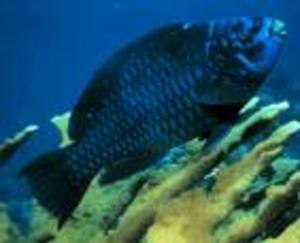According to an article in the Virginia Wildlife June 2011 Edition, article by King Montgomery indicates biologist are continually monitoring the Northern Snakehead population in the Potomac River system. Montgomery joined fisheries personnel from the Department (DGIF) on electrofishing sample runs on Virginia tributaries of the tidal Potomac River in Fairfax County. Montgomery indicates he had eaten snakehead fish before in Thailand and since he’s been with DGIF personnel, he says, it still tastes good…what does that tell us?
This article drew me into it because of the media frenzy about a snakehead fish that was caught out of a pond in Crofton, Maryland in May 2002. An Asian decent man admitted to dumping the fish into the Crofton because they had become too large for his aquarium; and, it’s believed the same type of event happened in the Dogue Creek, which appears to be the epicenter of the Potomac River snakehead population.
The article states that The Maryland Department of Natural Resources took actions to poison the Crofton pond; killing hundreds of snakeheads from baby ones to adult ones. I couldn’t image all the damage these snakeheads could do if they became rampant in our area waters. I remember seeing a news report showing that the snakehead had legs and they could walk to different areas…this gave me a complete set of nerves and my imaginations ran wild and they still do.
We all felt it’s great, they’ve killed all those naughty fish in the pond and we won’t have to worry about snakeheads anymore. Is this what we wanted to make ourselves believe or would there be others caught in the area?
The article indicates a bass fisherman caught another snakehead in 2004 in the Little Hunting Creek. The DGIF fisheries managers did an electrofishing sampling from the Fredericksburg regional office to turn up more of the fish and it included juveniles too.
According to this article, the Potomac River sure does have snakeheads and their populous is continuing to grow. The U.S. Fish & Wildlife Service has been coordinating tagging studies by Virginia, Maryland, and the District of Columbia to become educated about the range of this invader and what type of an effect it’s having on the ecosystem. It’s too late to eradicate the species; but instead, they’re going to try to manage the snakehead as a part of the Potomac River system. This monster, the snakehead, is here to stay, and all we can do is wait and see what the effects will be.
DGIF fisheries biologists John Odenkirk and Steve Owens have been involved with the snakehead since 2004. In a 2007 paper for the Transactions of the American Fisheries Society, reported the snakehead was well established in the tidal Potomac River, and at least eight year classes were shocked up in sampling runs. The age of the snakeheads could be read by the annular markings on the otolith, a bone in the ear of fish that can yield age estimates like the counting rings of a cross-section of a tree. The oldest fish was a little over 10 years of age which indicates the snakeheads have been in our area rivers since 1997 or 1998, and this does predate the Crofton pond event.
According to the article, 28 known species of snakeheads breed up to five times a year from spring through summer. A female snakehead carries more than 40,000 eggs and they can breed more than once a year considering if the environmental conditions are right. The fish keeps their young close together as they protect them until they’re seven or eight weeks old. If their young become threatened the snakehead can be aggressive.
As I read the article, I was glad to know that the fish cannot ‘walk’ or ‘fin’ on land as some of the first reports indicated. Goodness, this did relieve my mind a lot because I could just imagine going fishing and a huge snakehead fish sneaking up on me as I fished. It is a hardy creature and it does adapt too many conditions; and if kept wet, it can remain out of the water for a long time.
The article tells us the snakehead is native to Asia, Malaysia, Indonesia, and tropical Africa and they’re a valuable food source. The snakehead feeds on mostly fish, but they will also eat crustaceans, amphibians, and insects. What they found in the snakeheads stomach contents after analysis, i.e., the banded killifish (Fundulus diaphanous) was the most common morsel that turned up in its stomach contents; this is followed by the bluegills, pumpkinseeds, and white perch. The article also tells us these latter species comprised about 5 percent of the snakehead’s menu. Only 1 percent of the time largemouth bass and other prey species were eaten.
The article indicates that the snakehead is an excellent game-fish to catch. They can put up a fight when using surfaces and subsurface lures and flies. It will do anything possible to keep a person from landing it, so fisherman be on your toes…just a note, it can flop out of a live-well or net in a flash, so don’t blink your eyes if you’ve caught one.
Fishermen if you catch one of these snakeheads to take home, please call the Snakehead Fish Hotline at 804-367-2925 to report your catch and your possession of it. If you see a tag on the fish, call the number on the tag to report information about your catch. For more information: www.dgif.virginia.gov/fishing/snakehead-faq.asp.
Source:
(1) Virginia Wildlife Magazine June 2011 – https://www3.dgif.virginia.gov/estore/proddetail.asp?prod.
(2) Snake Fish Hotline at 804-367-2925 – http://www.dgif.virginia.gov/fishing/snakehead-faq.asp.








